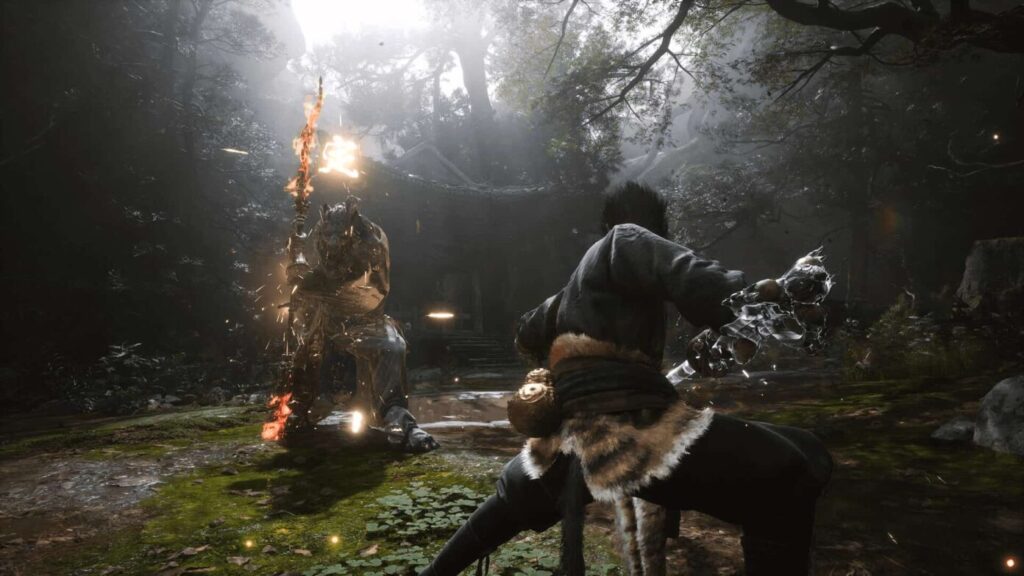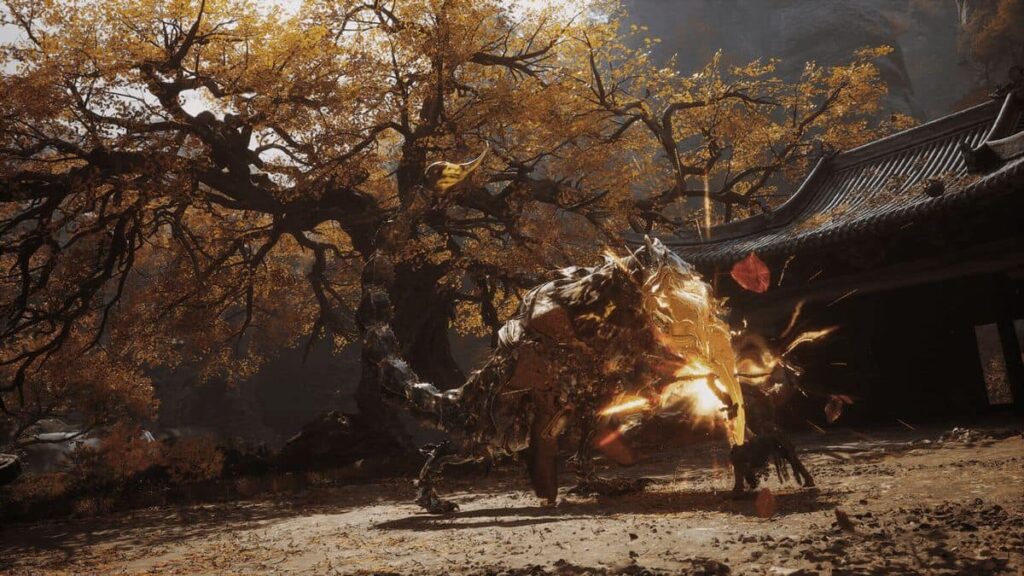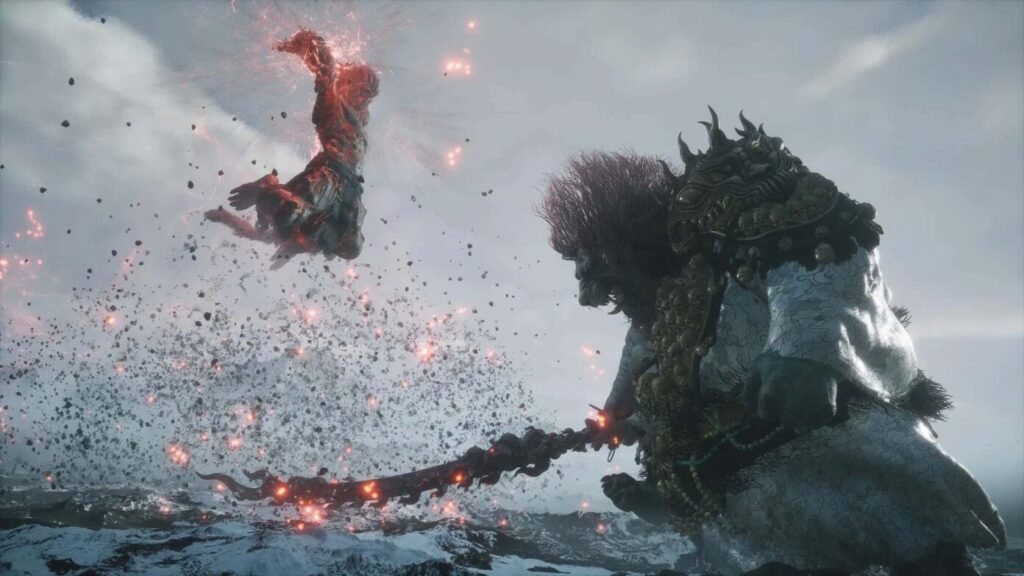Black Myth: Wukong is one of the most anticipated action RPGs in recent years, with its stunning graphics and unique take on the Chinese classic
Journey to the West. Developed by Game Science, this ambitious project leverages Unreal Engine 5 (UE5) to deliver a visually striking and immersive experience. However, adopting cutting-edge technology brings its own set of challenges. This article delves into the intricacies of developing Black Myth: Wukong, particularly the hurdles associated with utilizing UE5, and explores how these issues impact the game's progress and expectations.
Early Days of Development
Black Myth: Wukong made a splash in 2020 with its gameplay trailer, showcasing breathtaking visuals, intricate character designs, and dynamic combat. The reception was overwhelmingly positive, with fans around the globe praising its ambition. However, the journey to bring this vision to life has been anything but straightforward.
Initially built on Unreal Engine 4 (UE4), Game Science decided to transition to Unreal Engine 5 as the technology promised enhanced tools and capabilities. While this shift boosted the potential of the game, it also introduced numerous technical and developmental hurdles that the team had to overcome.
 Unreal Engine 5: A Game-Changer with Caveats
Unreal Engine 5: A Game-Changer with Caveats
The Promise of Unreal Engine 5
Unreal Engine 5 offers revolutionary tools like
Nanite, which handles high-polygon assets with real-time rendering, and
Lumen, a global illumination system that creates realistic lighting. These technologies allow developers to create lifelike environments and improve immersion without compromising performance on next-gen consoles and high-end PCs.
Transforming Black Myth: Wukong
Nanite and Lumen have enabled Black Myth: Wukong to achieve incredible graphical fidelity. Players are treated to lush forests, mystical caves, and realistic weather effects, all rendered seamlessly. These features create a world that feels alive and authentic, essential for immersing players in its mythological setting.
However, these advanced features come with a learning curve and significant technical demands, especially for a smaller studio like Game Science.
The Challenges of Transitioning to Unreal Engine 5
Technical and Compatibility Issues
The transition from Unreal Engine 4 to Unreal Engine 5 was not a simple upgrade. While UE5 offers backward compatibility, certain tools and workflows had to be adapted to the new engine. For example, asset optimization and gameplay mechanics needed reworking to take full advantage of UE5’s features without causing instability or performance drops.
Performance Optimization
Developing a game with UE5’s cutting-edge technology often requires a balance between high-quality visuals and stable performance. Black Myth: Wukong targets multiple platforms, including PC and next-gen consoles, each with different hardware capabilities. Ensuring smooth gameplay across these systems is a monumental task, especially given the resource-intensive nature of features like Nanite and Lumen.
Balancing Visual Fidelity with Gameplay
The Risk of Over-Polishing Graphics
One of the biggest risks for Black Myth: Wukong is focusing too heavily on visuals at the expense of gameplay. While players are excited about the stunning trailers, a game’s success ultimately depends on its mechanics, storytelling, and replayability.
Gameplay Depth vs. Visual Appeal
Game Science faces the challenge of ensuring that the gameplay is as engaging as its visuals. Combat mechanics, AI behavior, and level design must align with the game’s high production values. Without this balance, Black Myth: Wukong risks becoming a “style over substance” experience, where players admire the visuals but feel let down by the gameplay.
The Weight of Player Expectations
Hype: A Double-Edged Sword
Since its announcement, Black Myth: Wukong has garnered immense hype, with fans eagerly awaiting updates. While this attention brings visibility and potential success, it also adds pressure on the developers to meet sky-high expectations.
Managing Fan Anticipation
The combination of stunning trailers and ambitious promises creates a precarious situation. Any perceived shortcomings—whether in performance, content, or gameplay—could result in disappointment and backlash. The development team must carefully manage communications and avoid overpromising features they cannot deliver.
The Impact of Hardware Limitations
Optimizing for Multiple Platforms
While Black Myth: Wukong is designed with next-gen consoles in mind, it also needs to run on PCs with varying specifications. This dual focus complicates development, as assets and mechanics must scale across devices without compromising the core experience.
Performance Bottlenecks
Ensuring consistent frame rates and stability on lower-end systems requires scaling down features like Nanite and Lumen. However, this scaling must be done carefully to avoid losing the visual impact that has become the game’s hallmark.
The Role of Cultural Representation
A Unique Cultural Identity
Black Myth: Wukong stands out by embracing Chinese mythology and aesthetics, a rarity in the global gaming market. This cultural authenticity adds depth to the game but also requires meticulous attention to detail to avoid inaccuracies or misrepresentations.
The Importance of Faithfulness
Players expect a faithful representation of the rich lore from Journey to the West. Ensuring this authenticity involves consulting historians, artists, and cultural experts, which adds an additional layer of complexity to the development process.
Tackling Unreal Engine 5’s Learning Curve
Training the Development Team
For many developers, mastering UE5’s advanced tools is a significant hurdle. Game Science has invested considerable time and resources into training its team, ensuring they can fully leverage the engine’s potential.
Adapting Workflows
The shift to UE5 required overhauling workflows and pipelines to accommodate new features. This adaptation was time-consuming but necessary to achieve the game’s ambitious vision.
Post-Launch Support and Updates
Given the ambitious nature of Black Myth: Wukong, post-launch support will be crucial. Bug fixes, performance patches, and potential expansions will ensure the game remains relevant and satisfies players over time.
Conclusion
Black Myth: Wukong is a shining example of how Unreal Engine 5 can push the boundaries of gaming. However, its development has been a challenging journey marked by technical hurdles, performance optimization issues, and high fan expectations. By addressing these challenges head-on, Game Science is poised to deliver a groundbreaking experience that sets a new standard for action RPGs.











 Unreal Engine 5: A Game-Changer with Caveats
Unreal Engine 5: A Game-Changer with Caveats






